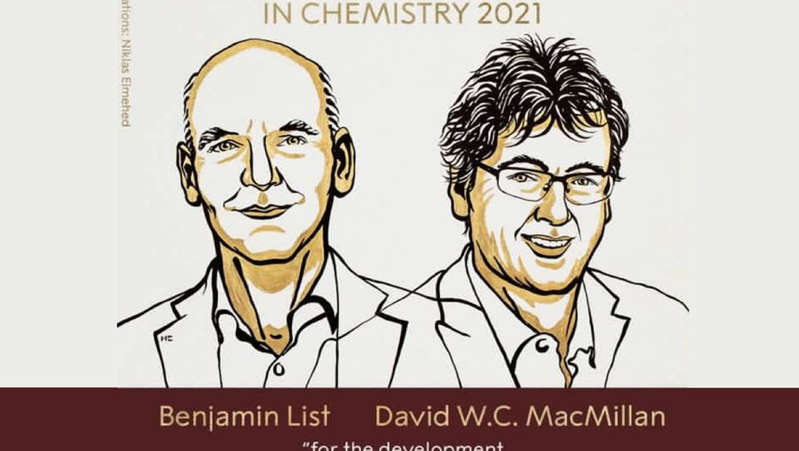
“Nobel” in chemistry was given for a new way of synthesizing molecules
The Nobel Prize in Chemistry in 2021 went to the German chemist, director of the Max Planck Institute for Coal Research, Benjamin List, and Princeton University professor David McMillan for research in the field of asymmetric organocatalysis. The names of the winners were announced at the Nobel Committee ceremony in Stockholm.
Asymmetric organocatalysis studies the possibility of carrying out complex asymmetric reactions using small organic molecules as catalysts, usually amino acids, some amines and their derivatives.
Modern medicine, science and industry largely depend on the ability of chemists to create molecules that will inhibit the development of diseases, form elastic and durable materials, store energy in batteries and solve many other problems. This work requires catalysts – substances that control and accelerate chemical reactions without becoming part of the final product.
For example, catalysts in cars convert toxic substances in exhaust gases into harmless molecules. Our bodies also contain thousands of catalysts in the form of enzymes that break down molecules into the building blocks necessary for life.
Catalysts are one of the main tools of chemists. For a long time it was believed that there are only two types of them – metals and enzymes. List and McMillan independently developed a third type of catalysis in 2000.
It is called asymmetric organocatalysis and is based on small organic molecules.
“This concept of catalysis is as simple as it is ingenious, and many have wondered why we hadn't thought of it earlier,” says Johan Equist, chairman of the Nobel Committee for Chemistry.
Organic catalysts have a stable framework of carbon atoms to which more active chemical groups can attach. They often contain common elements such as oxygen, nitrogen, sulfur, or phosphorus. This means that such catalysts are environmentally friendly and cheap to manufacture.
Organic catalysts quickly became popular, and this is primarily due to their ability to asymmetric catalysis.
When building molecules, situations often arise when two different molecules can be formed, which are mirror images of each other, like the hands or feet of a person. Chemists often need only one of them, especially in the production of pharmaceuticals – and asymmetric organocatalysis makes it possible to obtain just one of them.
Since 2000, organocatalysis has been developing at an astonishing rate. Liszt and McMillan remain leaders in this area. They showed that organic catalysts can be used to trigger a variety of chemical reactions.
Using these reactions, researchers can now more efficiently create anything from new pharmaceuticals to molecules that can capture light in solar panels. So organocatalysts bring great benefits to mankind.
Clarivate Analytics, the former science and intellectual property division of Thomson Reuters, predicted that the award could go to Singaporean chemist Barry Halliwell for his research on free radical chemistry, including the role of free radicals and antioxidants in human disease.
Another possible candidate was Yale University professor William Jorgensen, an expert in computational chemistry who has made a significant contribution to the study of organic and biomolecular systems in solutions. Jorgensen's discoveries have proven useful in the development and synthesis of many drugs.
Also, Professor Mitsuo Sawamoto from the Japanese Chubu University could become a laureate. He discovered and deeply studied metal-catalyzed “living” radical polymerization, one of the processes of obtaining high-molecular compounds from low-molecular ones without the formation of by-products.
In 2020, the prize was awarded to American biochemist Jennifer Doudna and French microbiologist Emmanuelle Charpentier for the discovery and study of the CRISPR-Cas9 genetic editing method – “molecular scissors” that allow you to cut out some fragments from DNA and insert others.

